-
PDF
- Split View
-
Views
-
Cite
Cite
ContentSnapshot, Annals of Botany, Volume 123, Issue 5, 11 April 2019, Pages i–iii, https://doi.org/10.1093/aob/mcz057
Close - Share Icon Share
The poorly known Ethiopian crop Enset (Review)
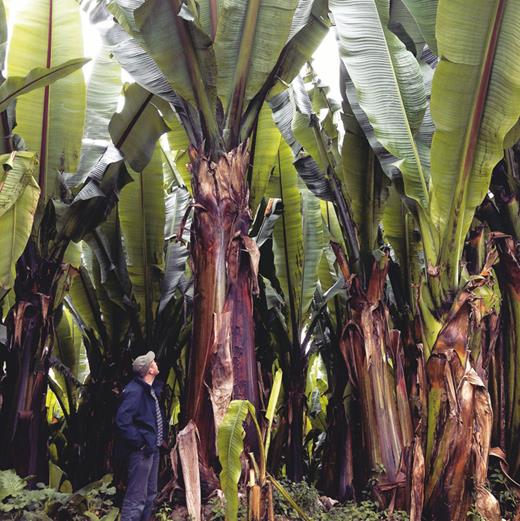
Annals of Botany 123: 747–766, 2019
doi: 10.1093/aob/mcy214
Enset, a relative of the banana, provides the staple food for around 20 million Ethiopians, yet is barely known outside of the region. Whereas bananas are farmed for their fruits, enset are grown for the swollen pseudostem and corm, with 50–60 mature plants feeding a family for a year. Enset has important food security traits, including flexible harvest times, rapid propagation and drought tolerance as well as useful co-products including fiber, medicine and animal fodder. Enset has been historically underexploited. Borrell et al. review research and progress to date, showing that enset has significant potential in Ethiopia, and beyond.
Authors: James S. Borrell, Manosh K. Biswas, Mark Goodwin, Guy Blomme, Trude Schwarzacher, J. S. (Pat) Heslop-Harrison, Abebe M. Wendawek, Admas Berhanu, Simon Kallow, Steven Janssens, Ermias L. Molla, Aaron P. Davis, Feleke Woldeyes, Kathy Willis, Sebsebe Demissew, and Paul Wilkin
Nuclear ribosomal RNA genes in enigmatic gnetophytes
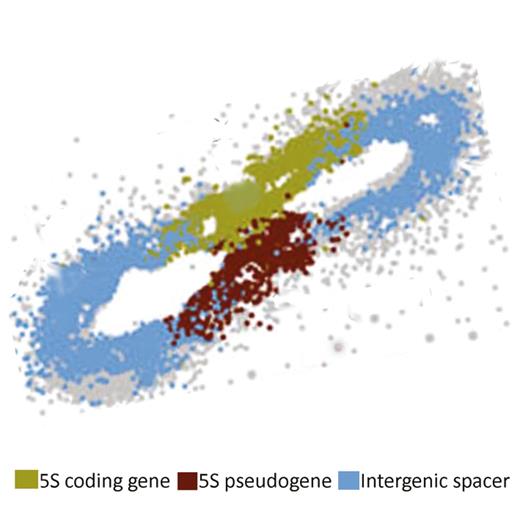
Annals of Botany 123: 767–781, 2019
doi: 10.1093/aob/mcy172
Wang et al. compare the large-scale organization and sequence diversity of ribosomal RNA genes (rDNA) in the three relictual genera Gnetum, Ephedra and Welwitschia. The phylogenetic relationships of these mono-generic families, within the gymnosperms, including the status of the order Gnetales, are not clear. Wang et al. find large variability in rDNA organization, locus number, and rDNA copy numbers. rDNA pseudogenes can be integrated within functional genes, suggesting their efficient amplification and homogenisation but inefficient removal from the genome. These diverse features of the rDNA support a large evolutionary distance between the three gnetophyte families.
Authors: Wencai Wang, Tao Wan, Hannes Becher, Alena Kuderova, Ilia J. Leitch, Sònia Garcia, Andrew R. Leitch, and Aleš Kovařík
For a Commentary on this article see this issue, pp. vi–vii.
Xylem conductivity after mechanical damage
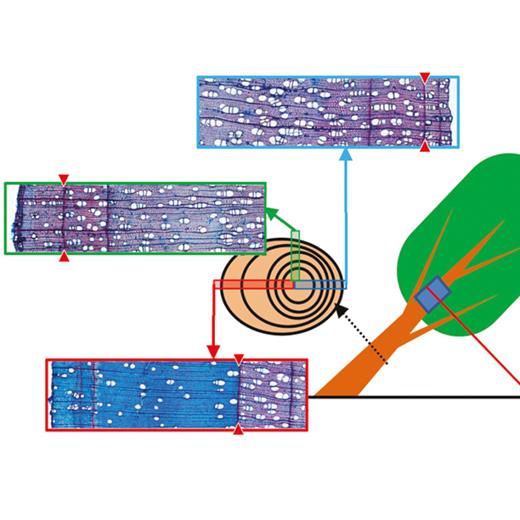
Annals of Botany 123: 783–792, 2019
doi: 10.1093/aob/mcy209
Vessel size and density is known to adjust in broadleaf plants after mechanical damage to stem or roots. This significantly alters hydraulic conductivity of xylem and transpiration capacity of the tree. Tumajer and Treml perform experiments with Silver birches, Betula pendula (Betulaceae), which were mechanically treated to simulate natural disturbances (e.g., landslide, windstorm, flood). Xylem conductivity abruptly decreases after the treatment in decapitated, tilted and scarred trees. The intensity of damage response significantly outweighed effects of climate and tree ageing on wood anatomical structure. The results show that increased frequency and intensity of forest disturbances might significantly affect temperate forests.
Authors: Jan Tumajer and Václav Treml
Ecophysiology of early lineage vascular plants
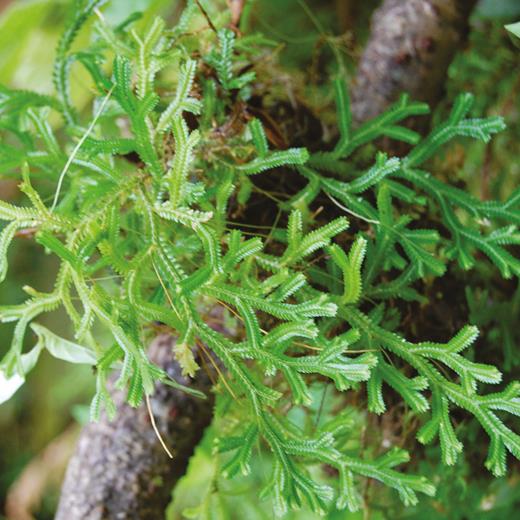
Annals of Botany 123: 793–803, 2019
doi: 10.1093/aob/mcy210
Tropical understory communities are highly diverse, and plants in these environments must optimize functional traits to ensure ecological and evolutionary success. Campany et al. survey the ecophysiology of two spore bearing vascular plant groups, Selaginella and ferns, in a lowland Costa Rican tropical forest understory. Selaginella in shade has higher chlorophyll levels and lower light compensation points compared with open habitats, where foliar nitrogen was lower and stomatal densities higher. Co-occurring ferns optimized ecophysiological function differently in tropical forest floors, likely related to evolutionary constraints of micro- and megaphyll leaf physiology. These findings contribute to global explorations of vascular plant trait patterns.
Authors: Courtney E. Campany, Lindsay Martin, and James E. Watkins Jr.
Evolutionary constraints on disparity of ericaceous pollen grains
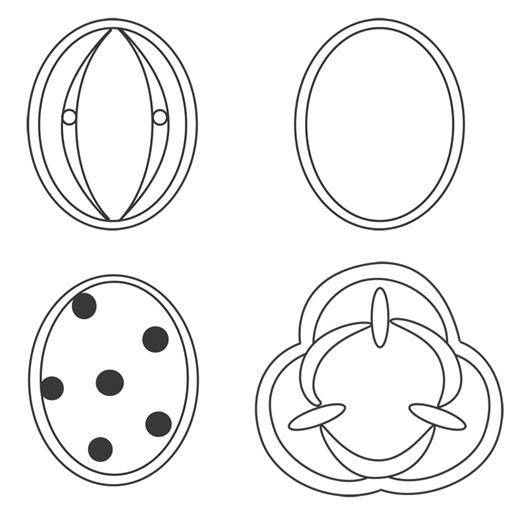
Annals of Botany 123: 805–813, 2019
doi: 10.1093/aob/mcy212
Flowering plants show a high diversity of pollen morphology, assumed to reflect not only variations in the underlying design, but also stress imposed by ecological conditions related to pollen survival and germination. Both components are expected to constrain accumulation of pollen disparity. Yu et al. perform a combination of phylogeny-based and statistical tests, demonstrating that pollen disparity in Ericaceae did not evolve steadily but pulsed over the time, clearly decoupling it from the relative constant-rate pattern of species diversification inferred. In pollen morphospace, most major clades appeared to occupy distinct neighbouring regions, and the distribution of species showed a strong central tendency.
Authors: Ying Yu, Harald Schneider, De-Zhu Li, and Hong Wang
Pea seed testa and its role during the establishment of physical dormancy
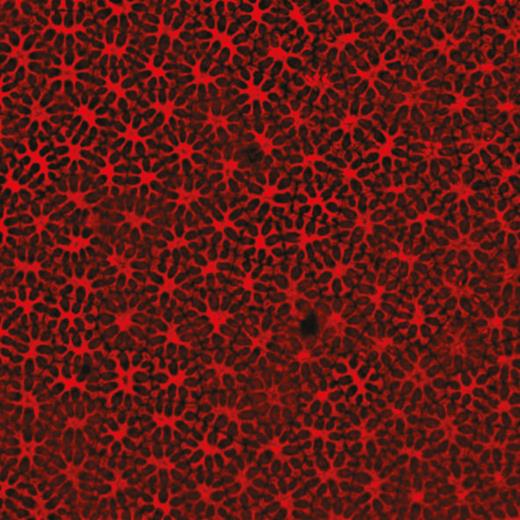
Annals of Botany 123: 815–829, 2019
doi: 10.1093/aob/mcy213
A water-impermeable testa may act as a barrier to seed imbibition, imposing dormancy. Janská et al. test six pea accessions of contrasting dormancy type for their ability to imbibe. The strophiole is identified as the major site for the water entry into non-dormant seed, while in dormant seeds water uptake is distributed, rather than localized. The light-line in the seed coat is identified as the major barrier to water penetration in dormant seeds. Its outer border abuts a waxy subcuticular layer, representing the interface between two distinct environments – the waxy subcuticular layer and the cellulose-rich secondary cell wall. The mechanistic basis of dormancy break includes changes in the testa’s lipid layer, along with the mechanical disruption induced by oscillation in temperature and by a decreased moisture content of the embryo.
Authors: Anna Janská, Eva Pecková, Bogna Sczepaniak, Petr Smýkal, and Aleš Soukup
Ancient barley landraces adapted to marginal soils are tolerant to manganese limitation
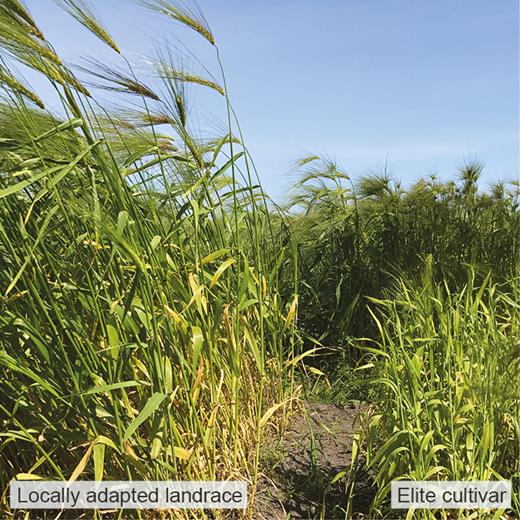
Annals of Botany 123: 831–843, 2019
doi: 10.1093/aob/mcy215
Locally adapted landraces provide unique genetic resources to raise grain yields in poorly-fertile marginal soils. Schmidt et al. evaluate the tolerance to manganese deficiency for a population of genetically diverse European barley landraces and modern elite cultivars. A subgroup of Scottish barley landraces demonstrated superior capacity to acquire and allocate manganese to the shoot. These landraces generated robust grain yields under severe manganese deficiency, while modern cultivars failed to complete their lifecycle. Compared to modern elite varieties, locally adapted landraces demonstrated an exceptional ability to acquire and translocate Mn to developing leaves, maintain photosynthesis and generate robust grain yields. A conceptual model highlights the future areas of research required to unravel the manganese efficiency trait and improve resilience and sustainability of agriculture.
Authors: Sidsel Birkelund Schmidt, Timothy S. George, Lawrie K. Brown, Allan Booth, John Wishart, Pete E. Hedley, Peter Martin, Joanne Russell and Søren Husted
Cytogeography of Cystopetris fragilis complex
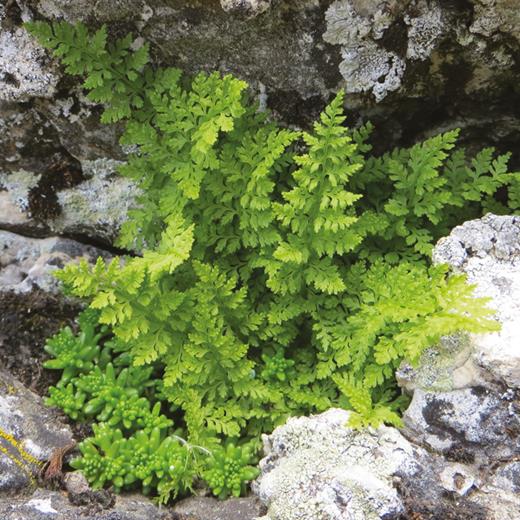
Annals of Botany 123: 845–855, 2019
doi: 10.1093/aob/mcy219
The widely distributed Cystopteris fragilis brittle bladder-fern, complex is a challenging system for studying polyploid evolution, cytotype diversity, distribution and ecology. Hanušová et al. screen cytotypes over the global range of the species: common and widespread tetraploids and hexaploids coexist, with 40% mixed-ploidy populations. High ploidy-level diversity matches the well-documented patterns in some angiosperms. The ploidy coexistence is not driven by environmental factors, but it could be facilitated by the perennial life-form of the species, its reproductive modes and efficient wind dispersal of spores. Monoploid genome size (Cx) comparisons indicate independent origins of hexaploids and/or inter-ploidy gene flow in mixed-ploidy populations.
Authors: Kristýna Hanušová, Martin Čertner, Tomáš Urfus, Petr Koutecký, Jiří Košnar, Carl J. Rothfels, Vlasta Jarolímová, Jan Ptáček, and Libor Ekrt
Plastid genomes of Shoreeae
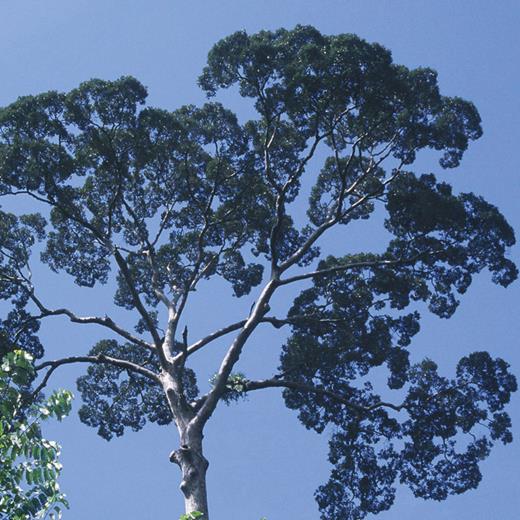
Annals of Botany 123: 857–865, 2019
doi: 10.1093/aob/mcy220
Phylogenetic relationships in the ecologically and economically important tribe Shoreeae present a long-standing problem in the systematics of Dipterocarpaceae. Heckenhauer et al. employ next-generation sequencing (NGS)-based genome skimming to obtain whole plastid genome sequences of the tribe. Phylogenomic analyses of the entire plastid genomes were successfully used for inferring phylogenetic relationships among genera and groups of Shorea sensu Ashton. Discordance in placement of Parashorea was observed between phylogenetic trees obtained from plastome analyses and from previously available nuclear DNA datasets. This could indicate ancient hybridization or incomplete lineage sorting.
Authors: Jacqueline Heckenhauer, Ovidiu Paun, Mark W. Chase, Peter S. Ashton, A.S. Kamariah, and Rosabelle Samuel
For a Commentary on this article see this issue, pp. iv–v.
Function of the pleurogram
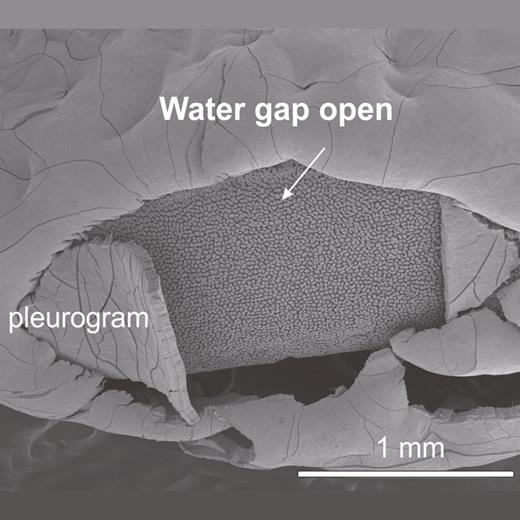
Annals of Botany 122: 867–876, 2019
doi: 10.1093/aob/mcy222
Water-impermeable seeds (physical dormancy, PY) have structures (“water gaps” or lenses in legumes) for detecting environmental cues that cause them to become water-permeable (nondormant). PY is common in legume species, whose seeds may have a visibly-demarcated structure called the pleurogram. Rodrigues-Junior et al. update the occurrence of the pleurogram in plant taxa and show for the first time that it can function as a water gap. An opened pleurogram creates a wider opening than an opened lens, and the pleurogram may function as a water gap in a large number of leguminous species.
Authors: Ailton G. Rodrigues-Junior, Ana Caroline M.P. Mello, Carol C. Baskin, Jerry M. Baskin, Denise M.T. Oliveira and Queila S. Garcia
Drought effects on apple tree shoot development and ontogeny
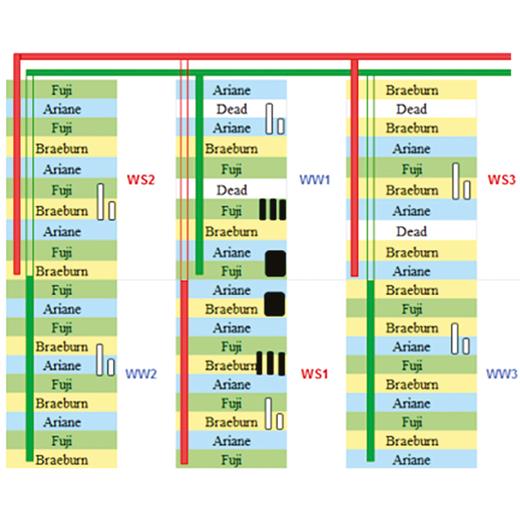
Annals of Botany 123: 877–890, 2019
doi: 10.1093/aob/mcy224
Chen et al. investigate the impact of a summer water stress on tree development and organ growth in three apple cultivars at tree, shoot and organ scales. A common response was found: water stress accelerated tree ontogeny by promoting summer growth arrest and reducing neoformation. Even if the impact of water stress slightly differs among cultivars, these mechanisms play a major role for stress avoidance by early reduction in tree leaf area. Improved understanding of cultivar adaptation to water constraint is profitable for future modelling of environmental effects on tree growth especially in the context of climate change.
Authors: Dianyu Chen, Benoît Pallas, Sébastien Martinez, Youke Wang, and Evelyne Costes
Benefits of within-species diversity on crop mixtures
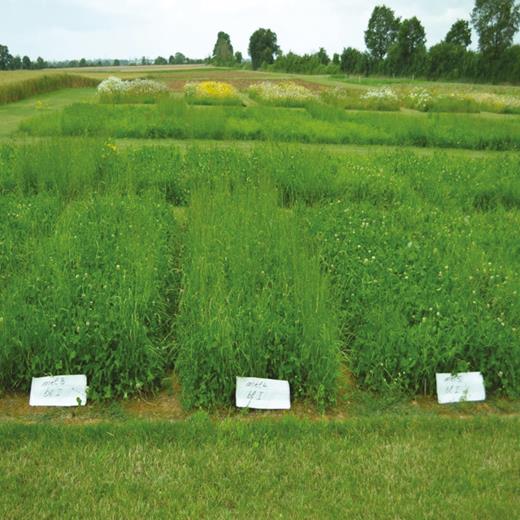
Annals of Botany 123: 891–900, 2019
doi: 10.1093/aob/mcy227
Like positive effects of species diversity, genetic diversity may have strong positive effects on agricultural ecosystems and positively influence production and species abundances in multispecies covers. But the effects of genetic diversity have not been much studied. Meilhac et al. study five species mixtures in temporary grasslands that differ by levels of genetic diversity. For the first time in a field-plot study, they demonstrate the major role played by within-species genetic diversity on the production, stability and species composition of temporary grasslands. Genetic and species diversity will likely provide additional levers for improving crops in diversified systems.
Authors: Julien Meilhac, Jean-Louis Durand, Vincent Beguier, and Isabelle Litrico
Heterochrony in reproductive development among P. rufum cytotypes
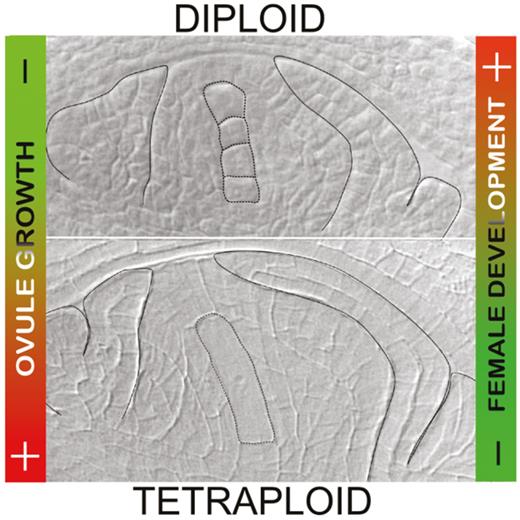
Annals of Botany 123: 901–915, 2019
doi: 10.1093/aob/mcy228
Apomixis in angiosperms is associated with polyploidy and hybridity. In Paspalum rufum, some sexual diploids show apomixis potential. As apomixis seems to derive from a deregulation of the sexual pathway, Soliman et al. carried out a comparison of the reproductive developments and apospory initials (AIs) emergence between diploid and tetraploid cytotypes. Cytoembryological observations evidence reproductive developmental heterochrony. Megasporogenesis and early megagametogenesis are delayed in tetraploids with respect to diploids. AIs appear in both cytotypes during megasporogenesis, but emerge after meiosis in diploid and along with megaspore mother cell in tetraploids. Results suggest that heterochronic development favours AIs differentiation and apomixis success at the polyploid level.
Authors: Mariano Soliman, Francisco Espinoza, Juan Pablo A. Ortiz, and Luciana Delgado
Explaining seed bank size of an invasive shrub
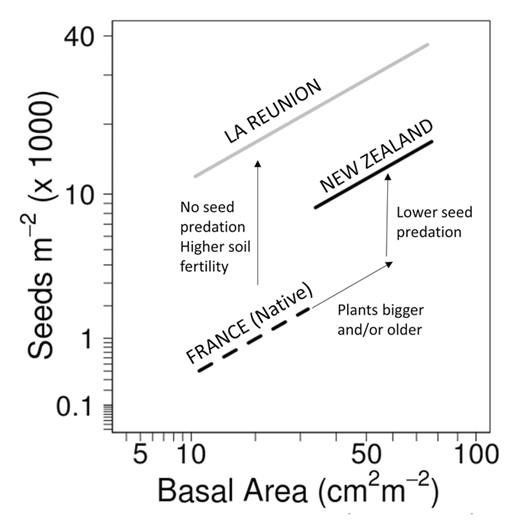
Annals of Botany 122: 917–927, 2019
doi: 10.1093/aob/mcy229
Bakker et al. find a positive relationship between plant size (V) and seedbank size (S), the SV relationship, using the invasive shrub Ulex europaeus as an example. Bigger plants produce more seeds and ultimately accumulate more seeds in the soil. Compared to the native context (France), the absence of pre-dispersal seed predators in La Réunion along with higher soil fertility could explain the change of the SV relationship in this region. Seedbanks in New Zealand appear higher because of bigger (potentially older) shrubs. In addition, decrease of seed pre-dispersal predation is likely to be involved in the increase of the intercept. Both V and S can be modified to control this invasive species.
Authors: Mark R. Bakker, Nathalie Udo, Anne Atlan, Céline Gire, Maya Gonzalez, Doug Graham, Alan Leckie, Sylvie Milin, Sylvie Niollet, Jianming Xue, and Florian Delerue



